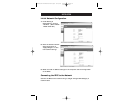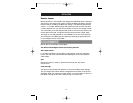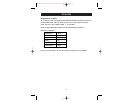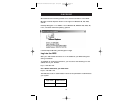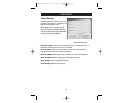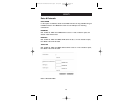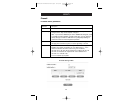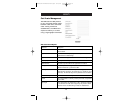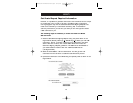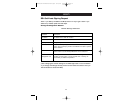
USING YOUR RIPC
Remote Access Options
The Remote Access title bar displays information about the incoming (In:) and
outgoing (Out:) network traffic. If you are using the compressed encoding,
both compressed and uncompressed incoming traffic will be indicated.
Remote Access Title Bar
Power Management Unit
This provides a Java applet that enables the telnet protocol to open a
connection to the RIPC. Its main use is the pass-through option for serial port
1, however, it also allows you to connect with a standard Telnet client. Telnet
access must be enabled in the security settings.
RIPC Mouse Synchronization
The RIPC addresses a common KVM-device challenge, which is the synchronization
between the local and remote mouse cursors. To do so, it uses an intelligent
synchronization algorithm.
There are three ways to re-synchronize local and remote mouse signals:
Fast Sync
The fast synchronization is used to correct a temporary, but fixed skew. Choose
the option using the Remote Access options menu or, if you defined a mouse
synchronization hot key sequence, use it.
Sync Detect
If the sync doesn’t work, or if the mouse settings have been changed on the
host system, use the intelligent re-synchronization. This method takes longer
than the fast synchronization and can be accessed with the appropriate item
in the Remote Access option menu. The intelligent synchronization requires a
correctly adjusted picture. Use the auto-adjustment function or the manual
correction in the Video Settings panel to set up the picture.
20
P74238-A-F1DE101G-man.qxd 4/10/03 4:25 PM Page 20



